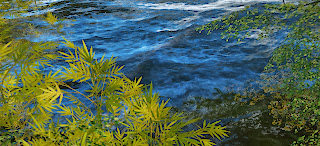Strategy statement
I wanted to create an underwater scene and how structures and materials decay by sea water and its mossy and damply environment. I personally think that degradation by salt water distinguishes and out-stands before any other degradation form. The video will take you through the building and a human's interaction to its decay. The location is at a rural site where there are various kinds of vegetation like the real site of the building.
The video will show that the building is taken care of by looking at the material's freshness and pool facility that is being used. However, as time goes by, sea level will suddenly rise abnormally and strong storms came affected by global warming and human race gets washed away.
The building will remain in the ocean and it will be left untouched for 100 years. This way, the material of the building will get mossy and damply and decayed to its distinctive way. The structure will be broken down due to the pressure of water. As there will be much of degradation by salt water, the building will eventually turn into sea creatures' dwelling.
After the storm
Must watch in HD!!!
Cryengine 3 file
3Ds max file




















.jpg)








